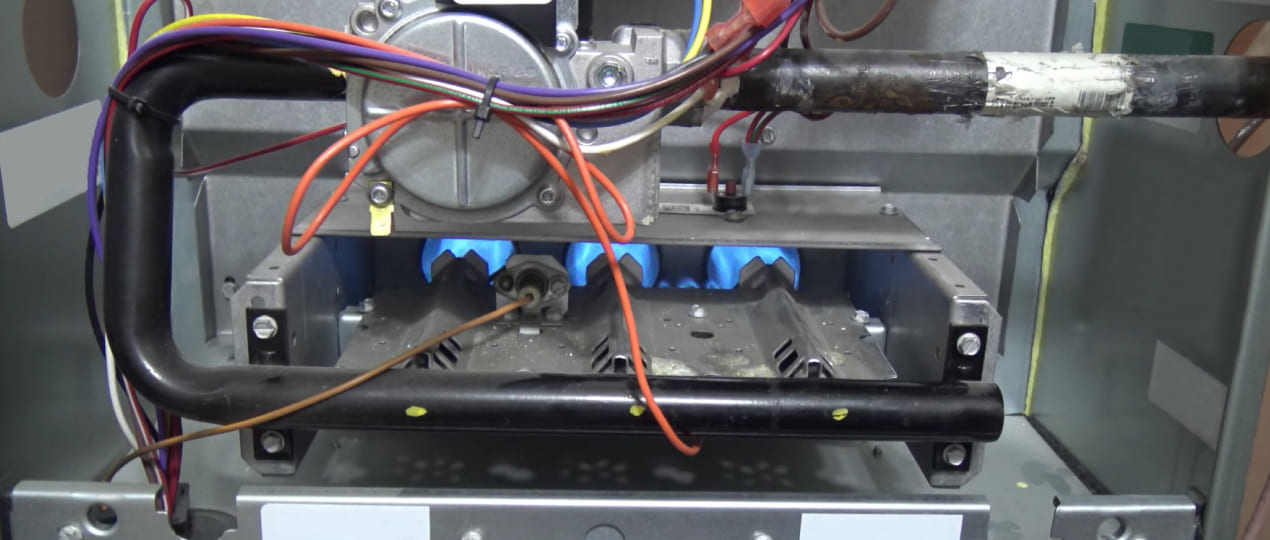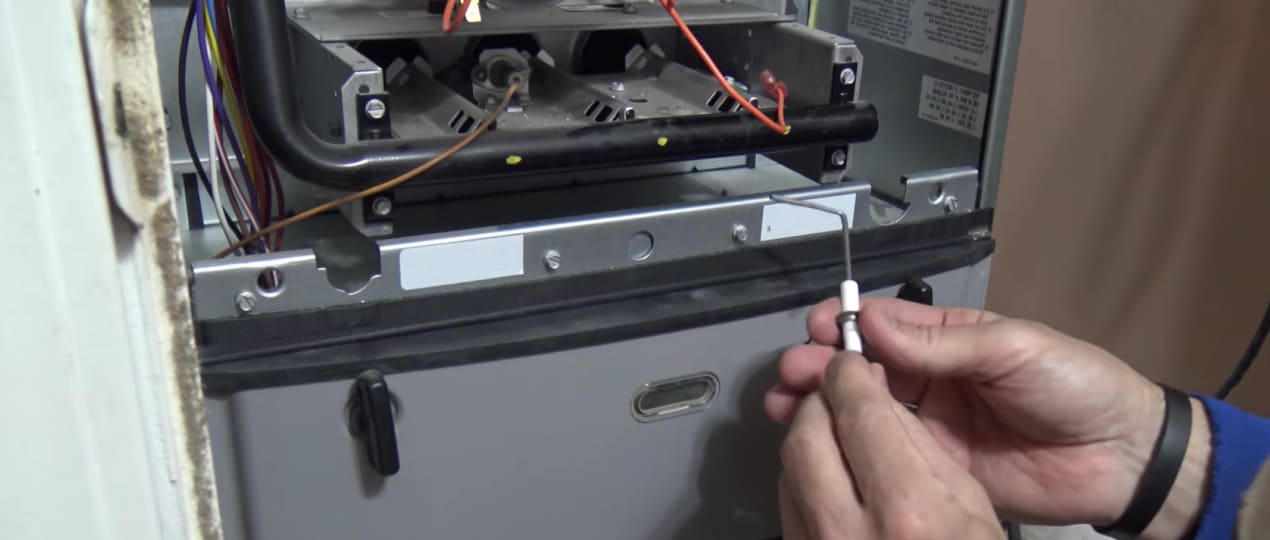
It can be frustrating to discover that your heating system is not performing as you expect, especially when you recognize repeated starts and stops during operation. This repeated cycle often raises the question: what does it mean when a furnace is short cycling?
Essentially, it refers to a malfunction that forces your furnace to turn on and off in unusually brief intervals, preventing it from completing a full heating cycle. If you have felt uneven temperatures in different rooms and watched your energy bills climb, this issue might be the root cause. In many cases, homeowners are not sure what would cause my furnace to short cycle or how to recognize the signs early on.
For anyone who wants to avoid inconvenience and hefty repair costs, apprehending what is short cycling furnace behavior is vital. By identifying its origin, you take targeted steps to address it. With the help of insights and careful troubleshooting, you extend lifespan and protect your home environment.
What is furnace short cycling and why does it happen?
Many homeowners find themselves asking such a query and why they observe their furnace turning on and off within minutes. Instead of running until it reaches the thermostat’s desired temperature, it shuts down prematurely. One common source of this issue stems from incorrect thermostat settings or placement, leading to confusing signals.
Yet the question remains, why does furnace short cycle frequently for some homeowners and not for others? The difference often lies in regular maintenance and proper installation. Furnaces that are meticulously maintained, with clean filters and carefully adjusted settings, experience fewer disruptions. When a case does occur, it can manifest through uneven indoor temperatures or an unexpected increase in energy usage.
What causes furnace to short cycle?
When a furnace is short cycling, you might experience lukewarm air, inconsistent room temperatures, or even random system shutdowns. Below, we will explore the principal factors behind. These insights help you pinpoint reasons for furnace short cycling in your own home and determine the right approach to resolve them. Before diving into the specific culprits, it’s important to note that problems escalate quickly if left unchecked. If you’re uncertain, consider contacting Superior HVAC Service for a thorough inspection and advice.
Restricted airflow
Restricted airflow is one of the most common causes for furnace short cycling. When a filter becomes clogged with dirt and debris, the system overheats because it struggles to push enough air through the vents. This overheating triggers the furnace’s safety mechanisms to shut the system down prematurely.
Poor thermostat placement
Sometimes, the source of a short cycling furnace causes is as simple as the thermostat’s location. When placed near drafts, direct sunlight, or heat sources, the thermostat can receive misleading temperature readings. If your thermostat is located near a heater vent, for example, it might signal that the room has reached the set temperature prematurely, causing the furnace to shut off. If you catch yourself thinking, why does a furnace short cycle immediately after installing a new thermostat, the culprit could be placement. Make sure the thermostat is centrally located and away from any unusual heat or cold sources.
Overheating
Overheating inside the chamber is another major causes of furnace short cycling. If you have neglected routine maintenance, components like the blower motor or heat exchanger become coated with dust and debris, leading to excessive heat buildup. The furnace then halts operation to protect itself. When the heater continues under such conditions, it’s essential to switch it off and allow it to cool before attempting any inspection or cleaning. Early intervention not only prevents damage but also saves on significant repair costs down the line.
Dirty or broken flame sensor
The flame sensor detects whether the gas burners are lit, ensuring the furnace safely provides heat. A dirty sensor can fail to detect the flame, causing the system to shut down. This issue is commonly cited as a top reason. Over time, dirt and residue accumulate on the sensor’s surface, reducing its sensitivity. If the flame sensor is broken or not functioning correctly, the furnace interprets it as no flame being present and stops the heating cycle prematurely. Homeowners often ask, what causes a furnace to short cycle when they have done everything else right, an overlooked flame sensor could be the answer.
Malfunctioning limit switch
The limit switch monitors the heat exchanger’s temperature, shutting the furnace off if it senses overheating. If this switch is faulty, it may signal the system to turn off too early. This malfunction is a prime example of similar troubles. When the switch sends incorrect readings, the furnace reacts by ending the cycle prematurely to avert potential safety hazards. If you find your furnace runs short cycles repeatedly, the limit switch could be to blame. While some homeowners try to fix it themselves, it’s usually best left to experts to handle electrical components safely.
Early warning signs of short cycling

Before minor issues escalate, it helps to recognize the early clues that indicate a concern. Inconsistent heat distribution, strange rattling sounds, and sudden temperature swings are all indicators that something could be amiss. If you address these signs promptly, you may prevent bigger problems and reduce the likelihood of further damage.
The five key early signals you should look out for are:
- Noticeable fluctuation in room temperatures from one area to another.
- Frequent on/off cycles occurring within less than 10 minutes.
- Unusual increase in energy bills without a clear explanation.
- Rattling or clanking sounds when the furnace ignites or stops.
- Weak airflow coming through vents even when the system is running.
If you pay attention to these early signs and take immediate steps, such as cleaning filters, checking thermostat placement, or contacting a pro, you may often prevent more serious breakdowns.
How often should my furnace run?
A well-functioning appliance typically runs several cycles per hour, depending on variables like insulation and external temperature. However, comprehending why is my furnace short cycling becomes crucial if your system starts or stops more frequently than usual. A typical heating cycle might last anywhere from 10 to 20 minutes. If your furnace switches on and off in intervals significantly shorter than that, you are likely dealing with short cycling.
Before jumping to any conclusions, observe your thermostat settings and monitor the runtime. Keep track of how long it runs and how quickly it restarts. If you discover them several times in the span of a single hour, it’s time to look for the potential causes. While minor fluctuations can be normal, repeated abrupt cycles are a warning sign. That’s when guidance from Superior HVAC Service can provide clarity and save you from extensive repairs.
How to repair furnace short cycling?
When you’re faced with such difficulty, immediate steps mitigate further damage. Typically, your approach will depend on the underlying cause. If you want to know how do i stop my furnace from short cycling effectively, start by inspecting accessible areas for dust or debris and checking the thermostat’s accuracy.
When resolving furnace short cycling causes, consider the fundamentals first: clean filters, proper thermostat location, and well-functioning sensors.
Filter replacement
If you frequently wonder, why is furnace short cycling, the first step should be to check and replace your filters. A routine filter change every month or two, especially during peak heating seasons, can drastically reduce the occurrence. Additionally, ensuring that vents and ducts are clear of obstructions will help maintain consistent airflow.
Adjusting thermostat placement for better cycling
If the thermostat is near windows or exposed to direct sunlight, you might experience inaccurate temperature readings. Relocating the thermostat to a central part of your home allows it to measure ambient temperature more reliably. This simple step often resolves complaints, especially in newly constructed or remodeled spaces. When repositioning, ensure the thermostat is at an appropriate height, usually around five feet above the floor, and away from furniture or vents that could distort the temperature detection.
Cleaning or replacing a dirty flame sensor
A dirty flame sensor often leads to furnace keeps short cycling, as it mistakenly interprets that no flame is present, prompting an immediate shutdown. To fix this, remove the sensor gently and clean it with fine-grit sandpaper or a soft cloth. If the sensor is severely corroded or damaged, replacing it is more cost-effective. Proper flame sensor maintenance not only rectifies short cycling but also improves the overall safety of your heating system. This is one of the simplest forms of furnace short cycling fix and can be done as part of your regular seasonal maintenance.
Preventing overheating in your furnace
Addressing overheating proactively is a great way to keep your problem at bay. Overheating happens due to clogged filters, blocked air vents, or malfunctioning components. Always switch off the furnace and let it cool if you suspect overheating. Inspect filters, belts, and blower wheels for signs of wear and tear, and clean or replace them as necessary. By ensuring ample airflow and timely part replacements, you cut down provocative events. A well-ventilated and regularly serviced furnace is less prone to abrupt shutdowns.
Limit switch replacement
A faulty limit switch explains cycling nonstop. If you’ve resolved airflow issues and cleaned necessary parts but still face persistent problems, the limit switch might need replacing. As this component prevents the furnace from operating at unsafe temperatures, it’s crucial to keep it in working condition. Most homeowners are unaware of the intricacies involved, which is why enlisting a professional’s help is recommended. If you keep facing short cycling after every other troubleshooting step, have a technician evaluate whether the limit switch is sending incorrect signals to your system.
When to call an HVAC professional for furnace short cycling
While DIY approaches can sometimes solve simple issues, frequent or severe short cycling often demands an expert’s touch. If your furnace running short cycles problem has led to repeated failures, rising energy bills, or insufficient heating, diagnosis is the safest route. If you’re curious even after basic fixes, an HVAC technician will uncover the root cause and ensure your furnace runs efficiently.
By reviewing these points beforehand, you’ll have a clearer picture of the potential problem and be better prepared to discuss symptoms with a technician.
What if you furnace has short cycling: key takeaways
Maintaining a reliable heater involves attention to detail, routine maintenance, and timely repairs. From clogged filters to thermostat misplacement, multiple factors trigger short cycling. Figuring out issues, from the minor to the more complicated, is the first step toward a stable, efficient heating system. Whether it’s how to fix short cycling furnace through filter checks or relocating the thermostat, your dedication to upkeep will pay off in energy savings and consistent warmth.
Even so, some situations may exceed the scope of basic troubleshooting. If repeated short cycles persist or you suspect a more serious malfunction, experienced help is indispensable. For dedicated support, consider scheduling a consultation with Superior HVAC Service, where experienced technicians can guide you step-by-step and ensure your home remains comfortably heated.
REFERENCES
1. Pint, B. A., Haynes, J. A., Lance, M. J., Aldridge, H. L., Viswanathan, V., Dwivedi, G., & Sampath, S. (2016). Factors affecting TBC furnace cycle lifetime: temperature, environment, structure and composition. Superalloys, 2016, 727-734. https://www.tms.org/Superalloys/10.7449/Superalloys/2016/Superalloys_2016_727_734.pdf
2. van Driel, R. A., & Sluijk, B. (1997). Analyzing the furnace area: How equipment and scheduling affect cycle time, COO. Solid state technology, 40(10), 161-165. https://go.gale.com/ps/i.do
